
Since the release of the Forza Motorsport 2 racing sim for Xbox 360 several weeks ago, players worldwide have been using the in-game custom paint function to create incredible designs for their cars, which they can either race online or buy, sell and trade through the game's virtual auction house. Japan?s digital racers have been in on the fun from the start, turning their virtual rides into magnificent itasha that scream otaku pride.
Here are links to two enormous online galleries (Gallery 1, Gallery 2) of virtual otaku-mobile paint jobs incorporating loads of Japanese-flavored eye candy, from anime and manga to games, food packaging and more. What makes these detailed paint jobs even more impressive is the fact they are created entirely with the game's basic paint tools -- a limited selection of vector shapes that can be colored, scaled, rotated and layered endlessly to create complex designs. Graphics cannot be imported from external sources, so everything is created manually step by step in what is undoubtedly a time-consuming process.
Here's a tiny sample of some of the work found in the galleries:
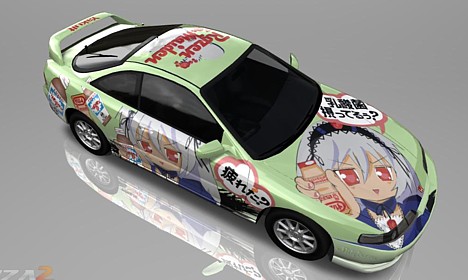



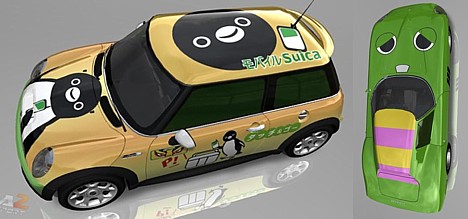

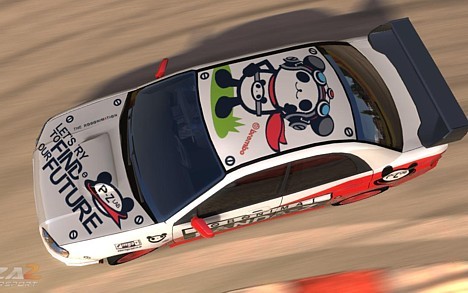

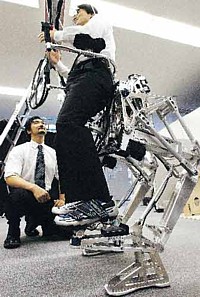 On June 15, electronics giant Matsushita Electric (Panasonic's parent company) unveiled a wearable robot suit called Power Pedal, which attaches to the lower body and provides users with up to seven times more leg strength.
On June 15, electronics giant Matsushita Electric (Panasonic's parent company) unveiled a wearable robot suit called Power Pedal, which attaches to the lower body and provides users with up to seven times more leg strength. The marketing minds at Fumakilla, a pesticide manufacturer, have launched a gimmicky bug spray promotional campaign that makes use of heat-sensitive, color-changing stickers placed in urinals at public restrooms around Shinjuku station. Under ordinary, dry conditions, the special urinal stickers show a housefly in the crosshairs of a rifle scope, but as men take aim and relieve themselves on the stickers, the fly transforms into an advertising message.
The marketing minds at Fumakilla, a pesticide manufacturer, have launched a gimmicky bug spray promotional campaign that makes use of heat-sensitive, color-changing stickers placed in urinals at public restrooms around Shinjuku station. Under ordinary, dry conditions, the special urinal stickers show a housefly in the crosshairs of a rifle scope, but as men take aim and relieve themselves on the stickers, the fly transforms into an advertising message.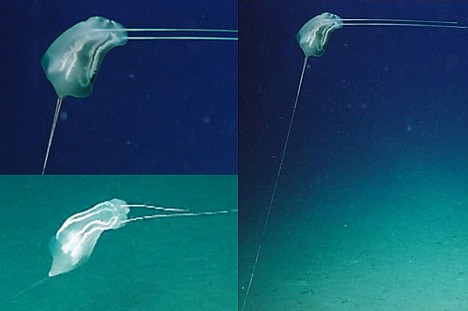
 Kansei, a robot face capable of 36 expressions that vary according to emotional interpretations of words it hears, is the latest achievement to emerge from a Meiji University research lab working to develop conscious and
Kansei, a robot face capable of 36 expressions that vary according to emotional interpretations of words it hears, is the latest achievement to emerge from a Meiji University research lab working to develop conscious and 
 Internet content creator
Internet content creator 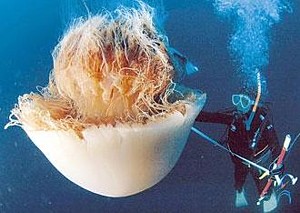 In the latest development in Japan's war against giant
In the latest development in Japan's war against giant